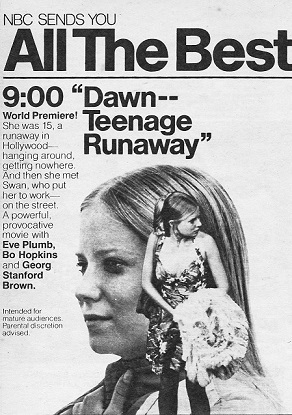Welcome to Retro Television Reviews, a feature where we review some of our favorite and least favorite shows of the past! On Sundays, I will be reviewing the made-for-television movies that used to be a primetime mainstay. Today’s film is 1974’s The Last Angry Man! It can be viewed on YouTube.
During the Great Depression, Dr. Sam Abelman (Pat Hingle) is a doctor who works in the slums of Brooklyn. Dr. Abelman can be gruff. Dr. Abelman can be crotchety. Dr. Abelman can be, as the title suggests, a little bit angry. He can’t help but get annoyed at how difficult it is to get his patients to pay him. He gets easily annoyed with red tape and bureaucracy. Dr. Abelman is an angry man. In his eyes, he’s the last angry man.
But that doesn’t mean that Dr. Abelman doesn’t care about his patients or the community in which he lives. Underneath his gruff exterior, Dr. Abelman is truly a man who wants to make the world a better place. Sam Abelman is especially angry at the doctors who have abandoned the neighborhood that once supported them and who now work at hospitals that have little room for the poor.
The film focuses on Dr. Abelman’s attempts to help Frankie Parelli (Michael Margotta), a troubled teenager who has a reputation for being a bully and a petty criminal. When Frankie starts to suffer from frequent seizures, Dr. Abelman comes to be convinced that Frankie is suffering from a brain tumor. Dr. Abelman wants to get Frankie seen by a specialist and a surgeon but it’s difficult because of Frankie’s own bad reputation and also the fact that Frankie’s family doesn’t have much money. Dr. Abelman uses a combination of shaming and outrage to finally get Frankie examined. But, when it become apparent that Frankie is going to need an operation, is Dr. Abelman going to be able to get him under the knife?
The Last Angry Man was loosely based on a novel by Gerald Green. The novel was previously adapted into a 1959 film, which starred the great actor Paul Muni in his final role. (Muni received an Oscar nomination for his performance.) If the novel and the 1959 film emphasized the grittiness of the neighborhood in which Dr. Abelman worked, the 1974 made-for-TV version takes place in a remarkably clean version of Brooklyn. It’s a very pleasant slum. There’s no trash to be seen. The apartment buildings and the streets have the crisp look that only comes from shooting on a studio backlot. Everyone in the neighborhood is remarkably friendly. Even Frankie is a rather mild-mannered delinquent. Dr. Abelman may be angry but everyone’s so nice that it sometimes seems like he’s going a little bit overboard.
The Last Angry Man was clearly meant to be a pilot for a television series and, as such, the movie’s action doesn’t really seem to build up to any sort of grand climax. Instead, the film is more about introducing Dr. Abelman and all the quirky people in the neighborhood. Pat Hingle was a good actor but, as Dr. Abelman, he’s all bluster with little depth. It’s hard not to feel that both the film and the potential show would have been well-served by having Pat Hingle and Sorrell Brooke (who plays Abelman’s best friend, Dr. Vogel) switch roles. When Sorrell Brooke gets annoyed and angry in this film, you have no doubt that the feeling is genuine.
Unfortunately, The Last Angry Man just isn’t angry enough.



